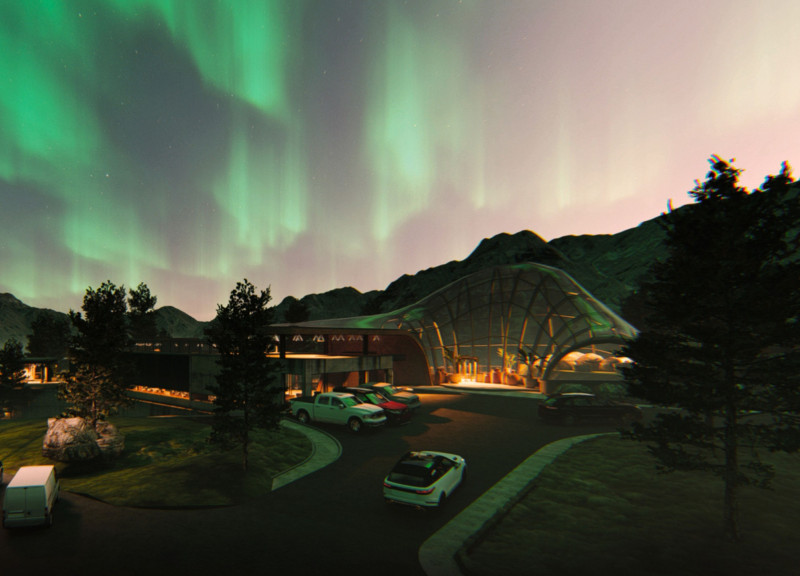5 key facts about this project
Axis Borealis is set in the distinctive landscape of Iceland, known for its volcanic features, geothermal activity, and expansive views. The design connects visitors with the environment while responding to the region's unique climate. Inspired by the movement of the Aurora Borealis, the project emphasizes light and panoramic perspectives, incorporating spaces for dining and a greenhouse lobby.
Design Concept
The overall concept maximizes the potential of the site, aiming to create a strong bond with the surrounding landscape. Horizontal lines drawn from broad vistas shape the design. The lobby presents a form that stands out against the rugged terrain. This approach creates a notable presence, encouraging exploration and interaction as visitors enter the space.
Functional Spaces
Key functional areas include a restaurant that doubles as an observation point. Its layout is designed to showcase views of the natural beauty outside. This arrangement enhances the experience for diners, allowing them to connect with the scenic environment. An integrated greenhouse lobby serves to create an inviting atmosphere as visitors transition from the outdoors to indoor spaces.
Materiality
The choice of materials contributes to both the durability and the design’s connection to the environment. The project uses concrete, glass, wood, marble, steel, and ceramic. Each material is selected for its resilience and suitability for the local climate, ensuring the building's longevity. Transparent and reflective surfaces allow natural light to filter in, creating a lively and changing atmosphere inside.
Spatial Organization
The organization of the interior spaces allows for easy movement and interaction between different areas. This layout encourages engagement and enhances the sense of community. The alignment of functional spaces emphasizes visual harmony, guiding visitors through the building. A dedicated viewing deck offers unobstructed views of the striking Icelandic landscape, reinforcing the building's connection to its natural surroundings.






















































